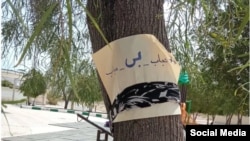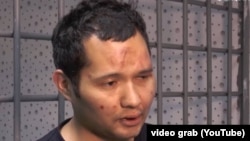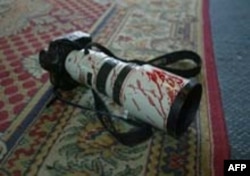
Iranian women's rights activists posted videos of themselves publicly removing their veils on July 12 to coincide with National Day of Hijab and Chastity.
The videos appeared on social media networks as women -- and in some cases men -- expressed their opposition to Iran’s law mandating that women wear a hijab in public.
Some videos showed women leaving scarves and shawls in the street and throwing them away. Some women appeared on public transport and in stores without a hijab, and some women wrote about their personal experiences or shared their observations on the hijab.
July 12 is Hijab and Chastity Day on the calendar of the Islamic republic, and government institutions and agencies are supposed to promote this for a week.
Iranian state television on July 12 aired a video of a Hijab and Chastity ceremony showing 13 women wearing green hijabs and long white robes as they danced to a narration that quoted verses from the Koran and stressed the importance of women being covered. The video was met with ridicule on social media.
Previously, several women's rights activists and civil activists had asked male and female Iranian citizens to show their opposition to the mandatory hijab in the country on the National Day of Hijab and Chastity. Following this call, videos and images started appearing on social media networks on the morning of July 12.
The New York-based International Campaign for Human Rights in Iran (ICHRI) said on July 11 there were "serious concerns over more potential violence and detentions on July 12."
The semiofficial Fars news agency said several people were arrested on July 11.
The hijab became compulsory in public for Iranian women and girls over the age of 9 after the 1979 Islamic Revolution.
Many Iranian women have flouted the rule over the years and pushed the boundaries of what officials say is acceptable clothing.






